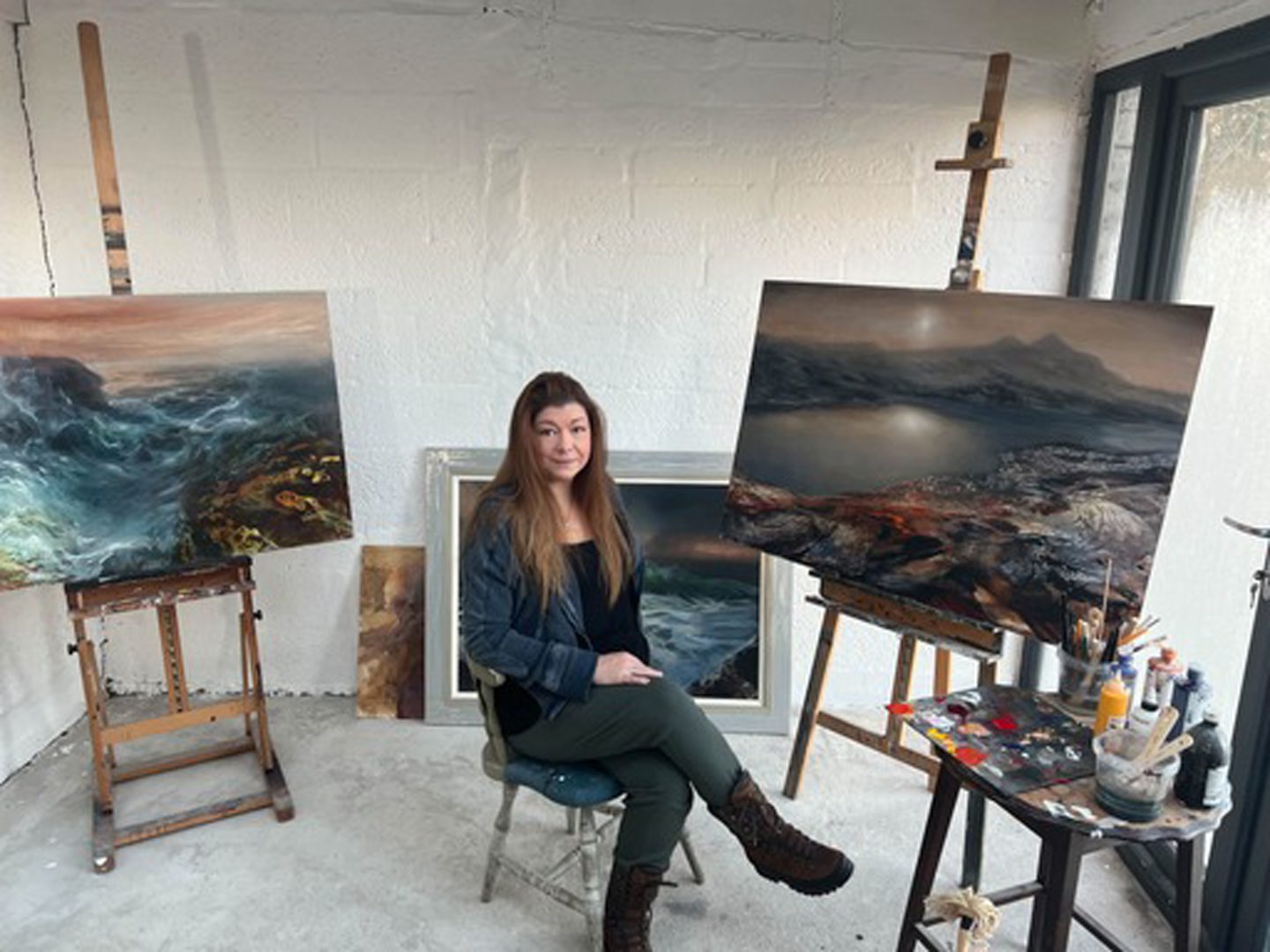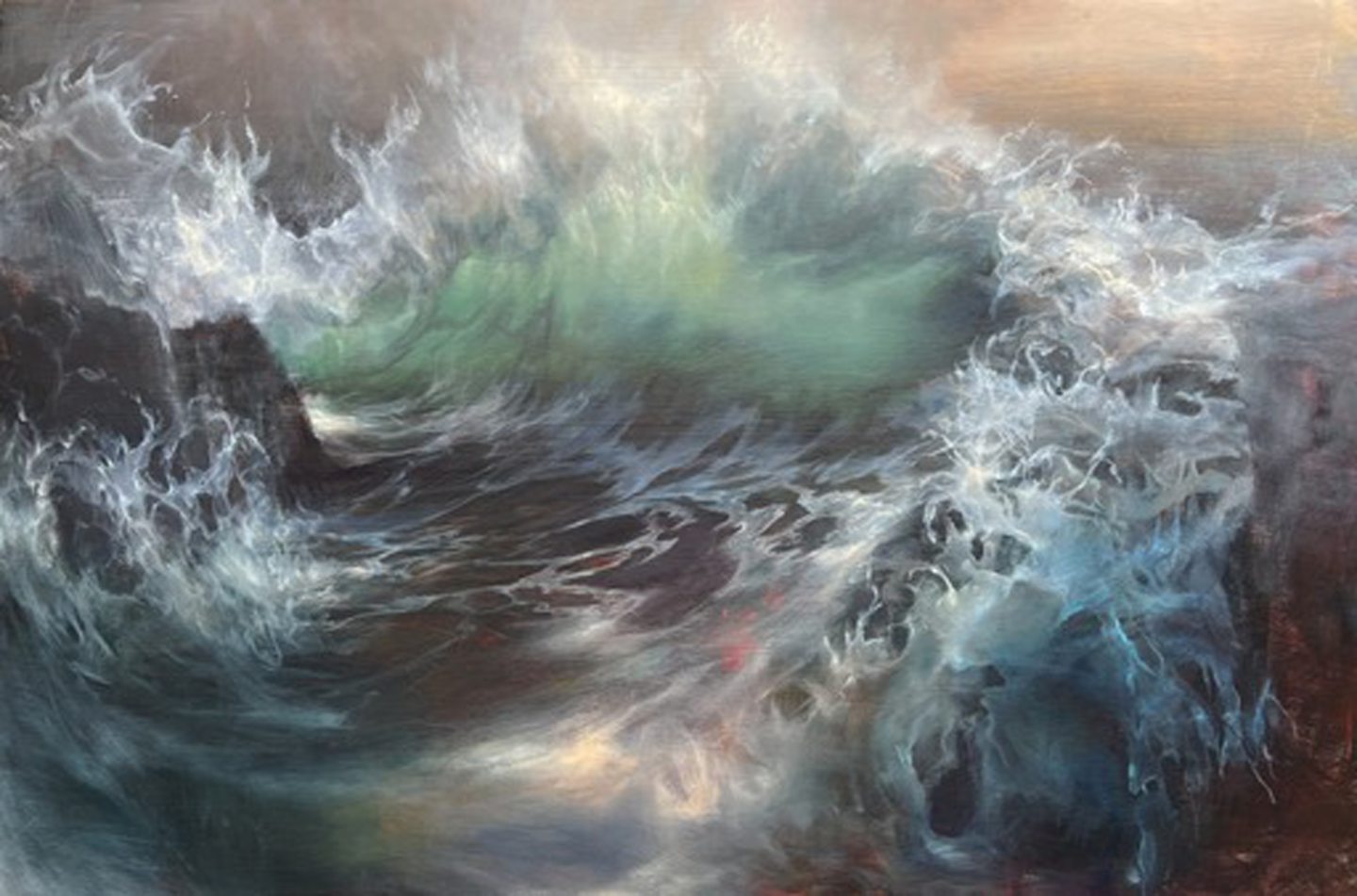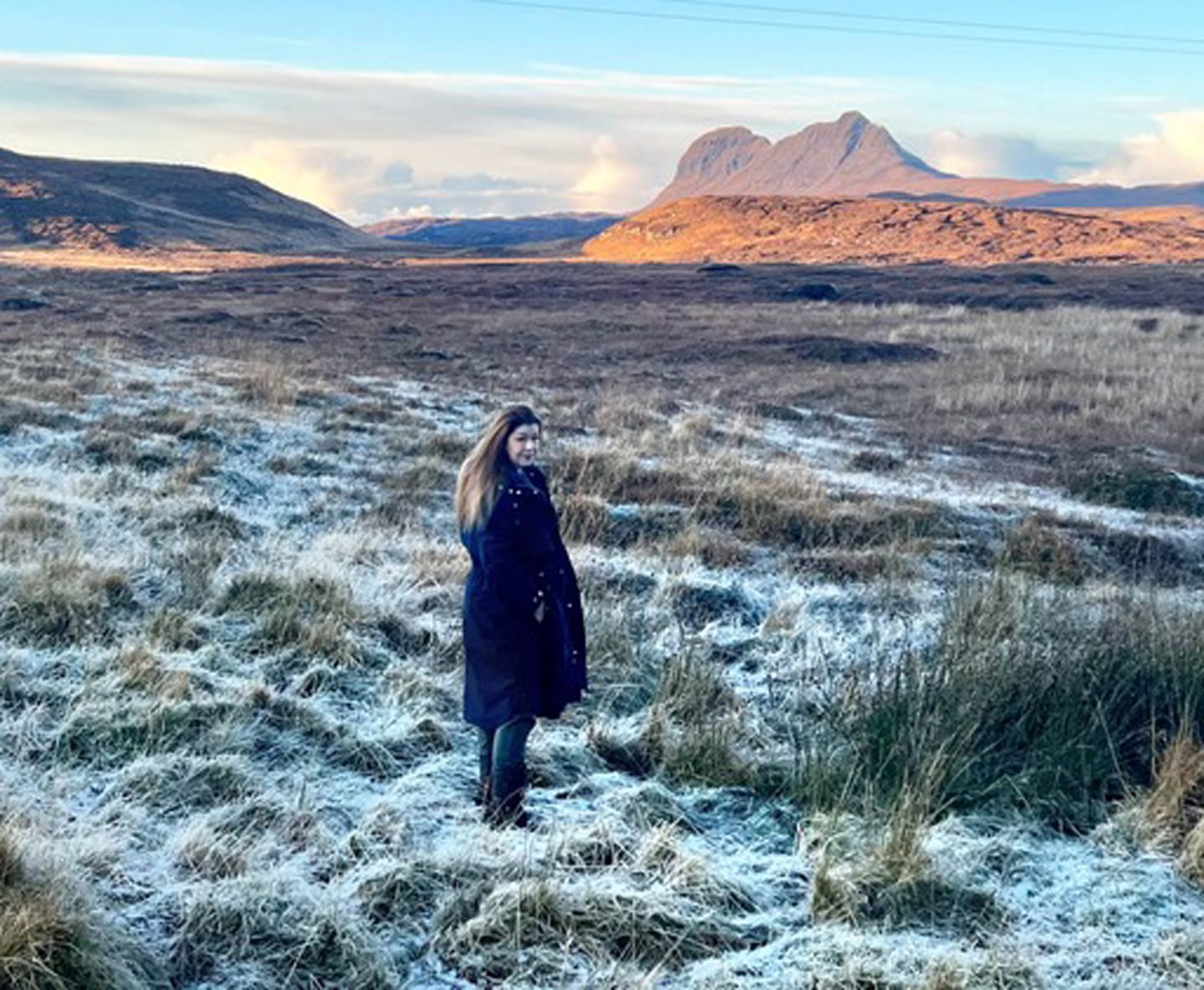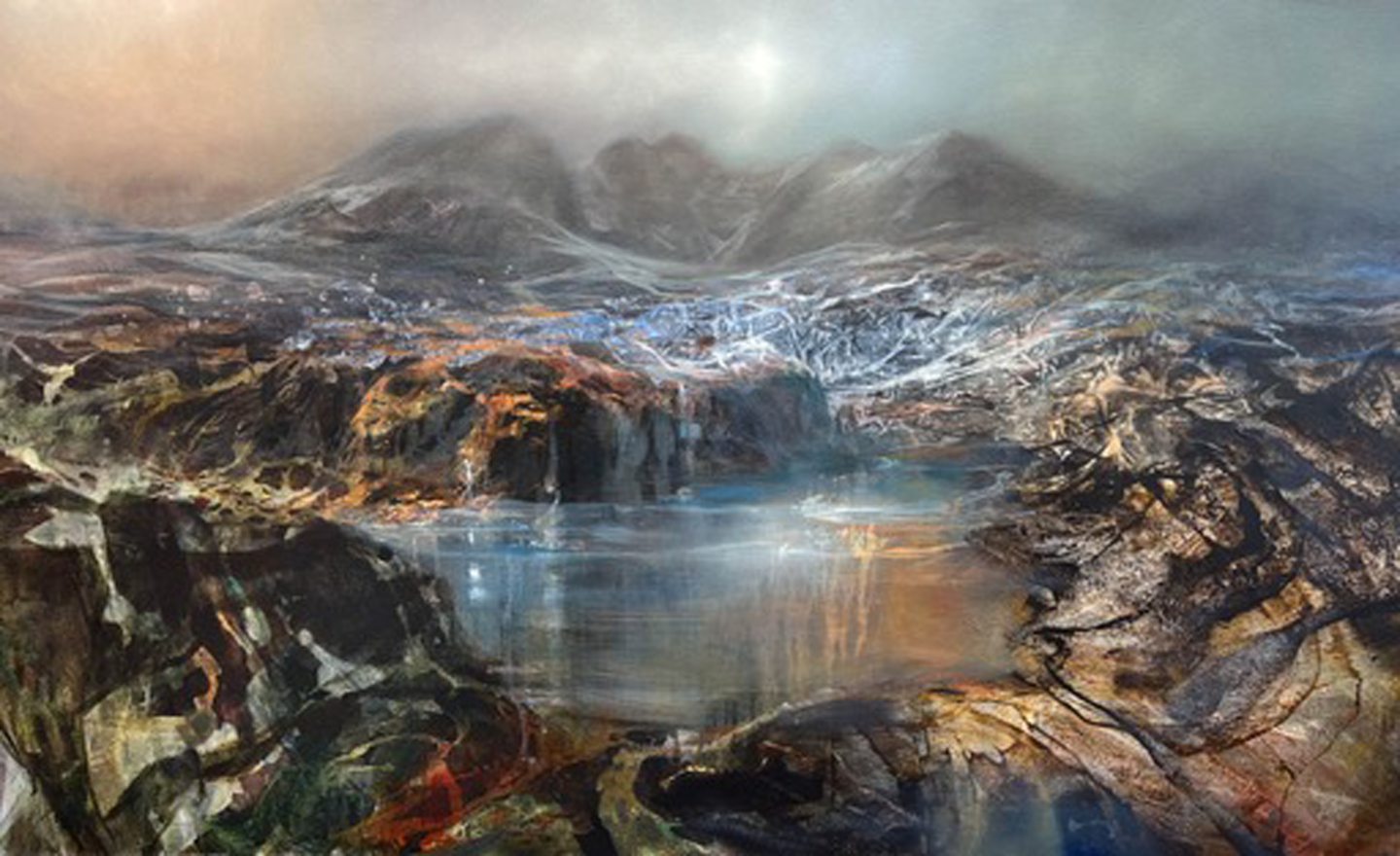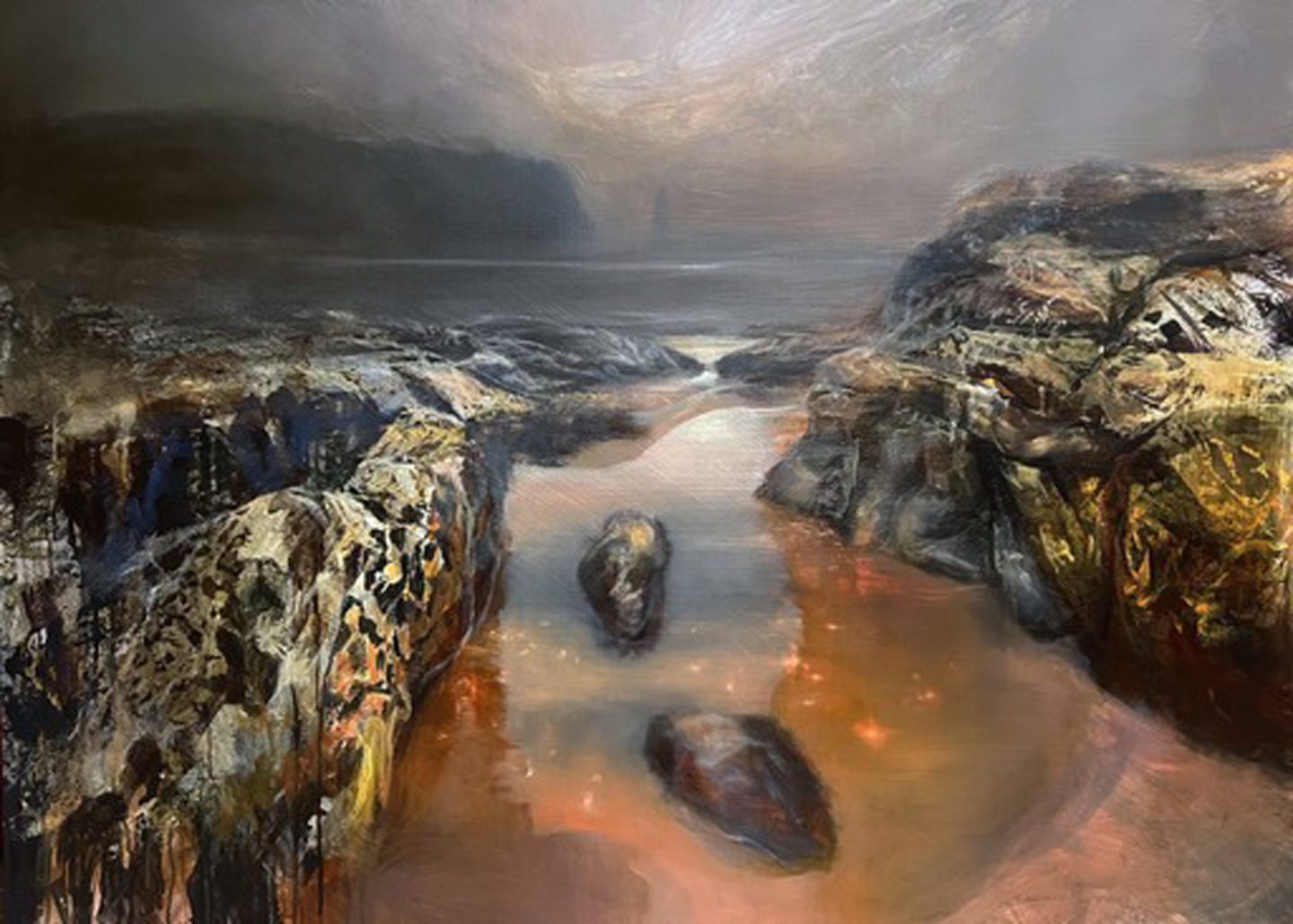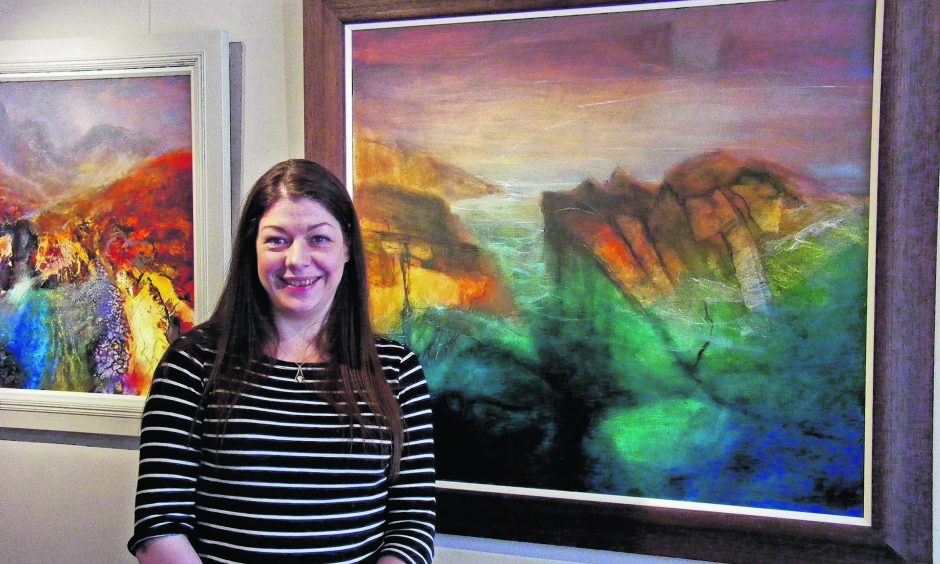
When you look at her paintings, the canvases spring to life and remind you of nature in all its glory.
And yet, with Beth Robertson Fiddes’ work, there’s also an otherworldly quality which you associate with somebody who has captured half-remembered glimpses of unique mornings and afternoons in different parts of her beloved Highlands.
As you might expect of one of Scotland’s most acclaimed creatives, her studio is awash with colour and sketches, whether in acrylic, ink or oil, or occasionally experimenting with collage and varying the thickness of the paint from impasto to glazes.
Walking in an abandoned place
This is somebody in love with her medium and, befitting her childhood spent in Tiree, there is a rugged, remoteness to many of her offerings – and yet, all these striking landscapes and seascapes both ooze with life and have their own distinct identity.
When we started talking, the conversation switched from her time at Edinburgh College of Art – where she graduated with a degree in sculpture in 1995 – to the impact of Covid on the cultural sector and her passion for St Kilda.
And, at once, we were both in agreement about one of the most fascinating places on the planet and what it felt like to be walking in an abandoned village setting.
The silence is the first thing that strikes you: the stillness around the dilapidated old buildings which once housed a thriving community in the Western Isles.
This was the remote archipelago where generations of redoubtable men and women defied the elements, the spartan conditions and being detached from their neighbours with a fierce commitment to self-sufficiency which sustained life for 2,000 years.
And when Beth arrived there, everything about the place cast an inexorable spell.
It must have been incredibly harsh
She said: “I spent six days camping there. An amazing experience. The scale of the cliffs and sea stacks is quite overwhelming.
“Hirta is often described as being a haven for wildlife, abandoned by its people, but one of the things I noticed most were the many signs of human life left behind.
“The village itself, with the remains of old buildings beside the newer houses which are now being restored and also the small stone cleats which are dotted around everywhere. It really made me think about day-to-day life there and how those people sustained themselves in that environment. It must have been an incredibly harsh existence.
“On the other side of the island, Glen Bay really felt like the edge of the world, a true sense of isolation but in a good way. There are huge bare slabs of rock at the waters edge and a dark narrow slanting cave which seemed full of watchful seals.
“I can only imagine what it would be like there during winter storms. After so many years of dreaming of a St Kilda visit, I think I was almost stunned to even be there.
“It takes time for me to distil ideas for my work and, even though it’s now been a while since my St Kilda trip, I still have ideas for new work in my mind. I hope to make the journey out there again before too long.”
Covid has had a ‘profound effect’
Beth’s work is currently part of an exhibition Borrowed Land at the Kilmorack Gallery, near Beauly in Invernessshire, and she has grown accustomed to travelling around Scotland – and even spending time in such varied settings as Kansas and Iceland – as the prelude to currently working on pieces based on the northwest coast of Scotland around her home in Elphin, halfway between Ullapool and Lochinver.
An artist’s life can be a precarious existence at the best of times and these last few years have been challenging for many in the sector. Yet Beth is nothing if not resilient and has gained sufficient plaudits in her career to steer a path through difficult waters.
Not that it has been an easy passage, most notably when the pandemic arrived in 2020.
She told me: “I think Covid had a profound effect on things. Some things just couldn’t happen. I had an exhibition which was due to open on the first day of lockdown which was never open to the public.
“I’ve been lucky though, as the galleries I work with were quick to adapt and find ways of engaging with the public online which helped a lot.
We found new ways to do things
“I was involved in a collaboration with pianist Mhairi Hall on her Airs project, which involved a tour of performances and exhibitions due to start at the same time.
“It seemed that all was lost when lockdown hit but, in the end, things were rescheduled, and with a bit of juggling, it turned out to be a great success.”
Not everybody can relate similarly auspicious stories. On the contrary, the impact of lockdown, followed by the cost-of-living crisis and crippling financial problems for councils and other bodies, has left myriad groups on the edge of the precipice with budgets reduced to the point where they can only aspire to shoestring status.
Beth is a tenacious character, somebody with the talent, temperament and technical expertise to transcend adversity, but she recognises that the younger generation who might be striving to follow in her footsteps, are facing the chill winds of austerity.
People must realise what’s being lost
She said: “There’s no doubt that it’s a difficult time for the arts generally with funding cuts. My whole life has been immersed in art in one way or another and I feel it’s so important that young people should have the same opportunities to explore that world and see where it might lead them.
“I hope the situation changes soon and those in power realise what is being lost.
“I feel that I have been very fortunate in that I seem to continue to have plenty of interest in my work. Largely, I believe this is down to the support I have had from the galleries who show my paintings and those people who have continued to follow my career and collect my work over the years.
“We have to make sure that others are allowed the same opportunities.”
Ultimately, Beth’s response to her tryst in St Kilda summed up her philosophy. A lot of people regard it as a sad place, focusing on the poignant story of the islanders’ evacuation in 1930, but she can look beyond that and marvel at the incredible vibrancy of thousands of years of human success in an awe-inspiring place.
And, as long as she is in her studio, she will ensure that the saga continues.
Further information about the Borrowed Land exhibition can be found on the Kilmorack Gallery website.
Five questions for Beth
- What book are you reading? Taste by Stanley Tucci.
- Who’s your hero/heroine? [The renowned Scottish artist] Joan Eardley.
- Do you speak any foreign languages? A bit of French.
- What’s your favourite music or band? I’m listening to a lot of Duncan Chisholm in the studio currently.
- What’s your most treasured possession? My big boots. They take me everywhere.
